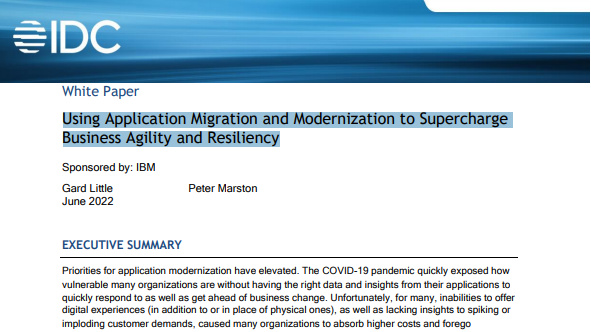Microsoft continues its Rust mission with new kernel features
The latest critical feature comes as a "small trial" to select Windows Insiders


Microsoft announced that it has taken an additional step forward to embracing Rust as a core language by introducing new Rust-based kernel features to the latest Windows Insider build.
On Wednesday it shipped Windows 11 Insider Preview Build 25905 containing what it called a “small trial” of another critical kernel feature written in Rust.
The update specifically concerns a new implementation of GDI Regions in the win32kbase_rs.sys driver file located in System32. The _rs refers to the Rust language version.
GDI Regions refer to shapes, or a combination of shapes, that can be created for tasks like hit testing - checking to see if a cursor is hovering over a specific icon, for example.
“While this is a small trial, we will continue to increase the usage of Rust in the kernel,” Microsoft said in a blog.
“We are beginning to roll this out, so the experience isn’t available to all Insiders in the Canary Channel just yet as we plan to monitor feedback and see how it lands before pushing it out to everyone.”
Microsoft’s commitment to Rust
It’s long been known that Microsoft has aimed for a stronger adoption of the Rust programming language.
Sign up today and you will receive a free copy of our Future Focus 2025 report - the leading guidance on AI, cybersecurity and other IT challenges as per 700+ senior executives
RELATED RESOURCE

Propel your digital transformation to the next generation.
DOWNLOAD FOR FREE
The company’s CTO issued a call to the industry last year, encouraging it to embrace Rust over traditional languages like C and C++, following in its own footsteps as well as other major tech firms like Cloudflare and Linux, the latter of which is also implementing Rust in its own Kernel.
Microsoft’s interest in Rust dates back years and made a case for its adoption as early as 2019.
It highlighted in a 2019 BlueHat presentation that most security vulnerabilities are caused by developers accidentally implementing memory safety issues in software components written in C or C++.
Rust and memory safety
One of the headline benefits of Rust is its inherent memory safety. For this reason, it’s considered a more secure programming language that can do the same things that the older C/C++ can do, at the same speed and efficiency - the main reasons for sticking with the older languages for so many decades - with better security.
Rust is memory-safe thanks to its compiler which refuses to build any program it's used to write unless memory safety can be guaranteed.
It makes for fewer security vulnerabilities and more reliable programs that are less likely to crash.
For this reason, it’s also being adopted by an increasing number of major ransomware operations, with a number of groups rewriting their payloads using the language.
BlackCat, Hive, and LockBit are among the most notable ransomware groups that have shifted to Rust in recent months. Ransomware binaries also benefit from Rust’s anti-analysis properties, largely attributed to the complex way in which its compiler translates developer code into machine-readable code.
Major tech companies, in addition to the aforementioned Microsoft, Cloudflare, and Linux also have their own Rust projects running in some capacity.
Meta, Amazon, Mozilla, Dropbox, and Figma are among the most notable in this far-from-exhaustive list.
Rust has also been the ‘most loved’ language by developers in the past seven annual StackOverflow surveys, underlining its popularity.
As more tech companies increasingly embrace the language, it’s likely to become more of an in-demand skill for developers in the years ahead.

Connor Jones has been at the forefront of global cyber security news coverage for the past few years, breaking developments on major stories such as LockBit’s ransomware attack on Royal Mail International, and many others. He has also made sporadic appearances on the ITPro Podcast discussing topics from home desk setups all the way to hacking systems using prosthetic limbs. He has a master’s degree in Magazine Journalism from the University of Sheffield, and has previously written for the likes of Red Bull Esports and UNILAD tech during his career that started in 2015.
-
 Gender diversity improvements could be the key to tackling the UK's AI skills shortage
Gender diversity improvements could be the key to tackling the UK's AI skills shortageNews Encouraging more women to pursue tech careers could plug huge gaps in the AI workforce
-
 Researchers claim Salt Typhoon masterminds learned their trade at Cisco Network Academy
Researchers claim Salt Typhoon masterminds learned their trade at Cisco Network AcademyNews The Salt Typhoon hacker group has targeted telecoms operators and US National Guard networks in recent years
-
 Using an older version of Python? You’re leaving ‘money and performance on the table’ if you don’t upgrade – and missing out on big developer efficiency gains
Using an older version of Python? You’re leaving ‘money and performance on the table’ if you don’t upgrade – and missing out on big developer efficiency gainsNews New research from JetBrains shows a majority of enterprises are using a version of Python that’s a year or more older – and it's having a big impact on efficiency and performance.
-
 ‘It’s far from showing its age’: Java might’ve just turned 30, but it’s still going strong and here to stay
‘It’s far from showing its age’: Java might’ve just turned 30, but it’s still going strong and here to stayNews With Java celebrating its 30th anniversary, we look at the rise of the programming language and what the future holds.
-
 Python’s popularity shows no signs of fading – here’s why software developers love it
Python’s popularity shows no signs of fading – here’s why software developers love itNews Python remains highly popular among developers for a number of key reasons, experts told ITPro.
-
 Oracle Java pricing concerns could spark a developer exodus
Oracle Java pricing concerns could spark a developer exodusNews Oracle Java users have raised concerns over pricing, with many considering switching to open source options.
-
 Python just brushed past JavaScript to become the most popular programming language on GitHub – and a key factor is that AI developers love it
Python just brushed past JavaScript to become the most popular programming language on GitHub – and a key factor is that AI developers love itNews The meteoric rise of Python shows no sign of stopping
-
 JupyterLab review: A powerful tool for documenting your data science journey
JupyterLab review: A powerful tool for documenting your data science journeyReviews Literate programming toolkit takes dynamic code documents to new heights
-
 Report: Regulatory and monetary incentives needed to adopt safer programming languages
Report: Regulatory and monetary incentives needed to adopt safer programming languagesNews Companies have been urged to create plans on how they intend to get rid of memory-unsafe code in their products
-
 Microsoft Azure CTO hails 'most loved' Rust as the successor to C and C++
Microsoft Azure CTO hails 'most loved' Rust as the successor to C and C++News Rust is a newer programming language that developers enjoy using and learning, and it's being adopted far across the industry, too